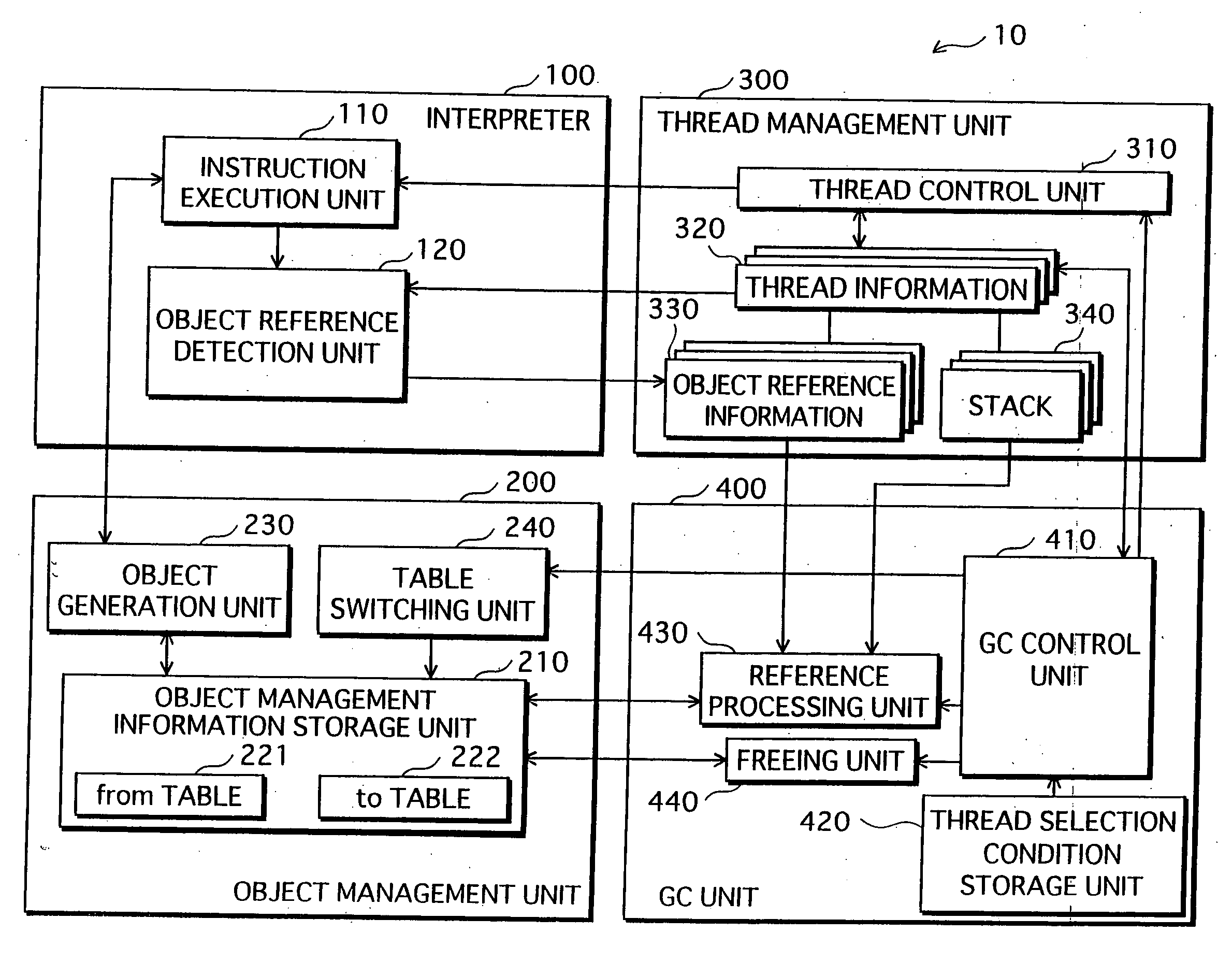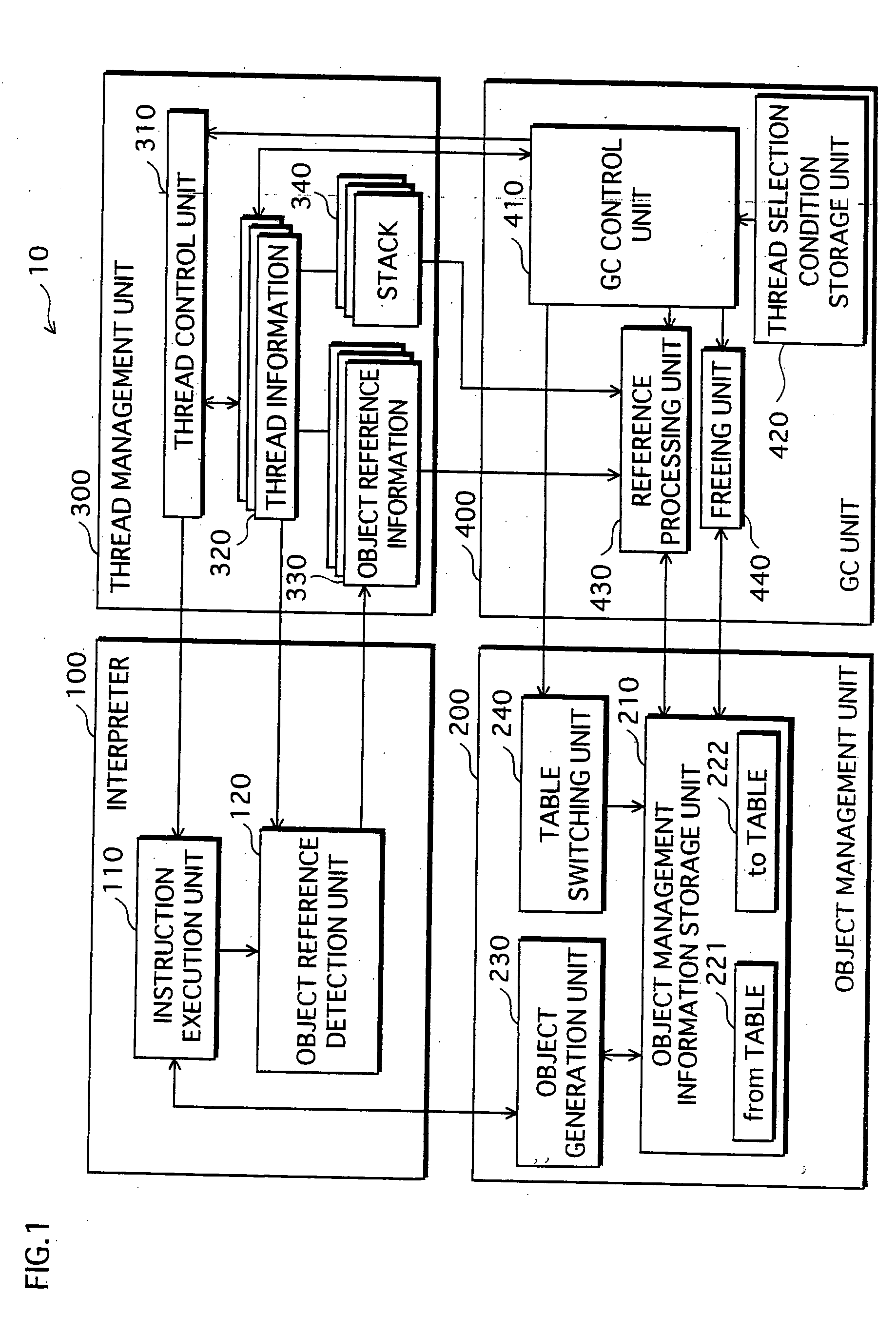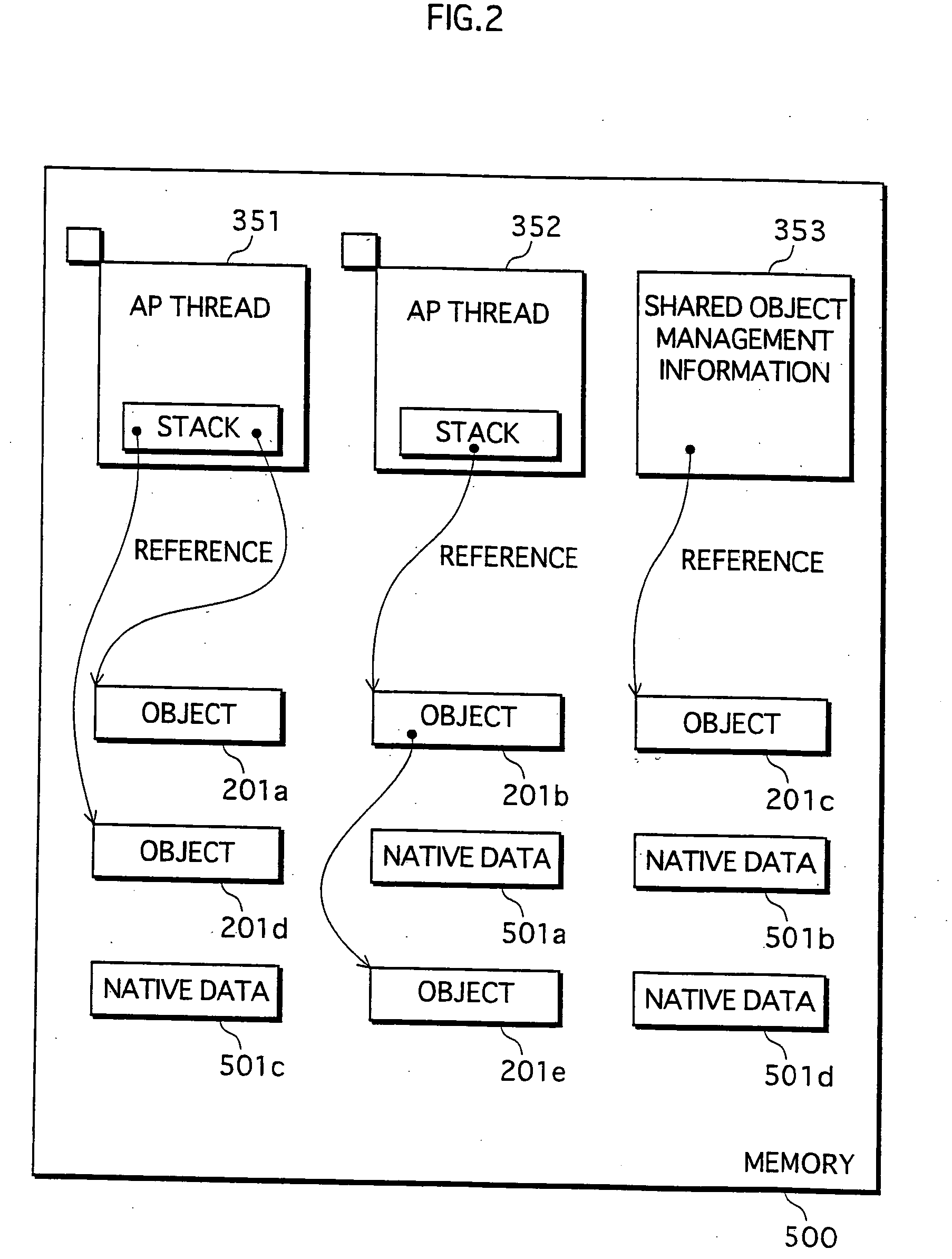Garbage collection system
a garbage collection and garbage technology, applied in the field of garbage collection, can solve the problems of wasteful part of the processing of marking objects that can be reached from the object pointer in the stack area, all the threads of the ap will be stopped for a relatively long time, and confusion for users
- Summary
- Abstract
- Description
- Claims
- Application Information
AI Technical Summary
Benefits of technology
Problems solved by technology
Method used
Image
Examples
first embodiment
[0053] The following describes a garbage collection (GC) system of the first embodiment of the present invention with reference to the drawings.
[0054]
[0055]FIG. 1 is a functional block diagram of the GC system of the first embodiment of the present invention.
[0056] A GC system 10 is realized in a computer that includes a CPU, a memory, and so on, by the CPU executing control programs stored in the memory. The GC system 10 includes a general operating system (OS) that performs multithreaded control, and a so-called virtual machine, and is provided as an execution environment for application programs created in languages such as Java.
[0057] The GC system 10, as shown in FIG. 1, is composed of an interpreter 100, an object management unit 200, a thread management unit 300, and a GC unit 400.
[0058] Here, the interpreter 100 is essentially an interpreter that has a function of executing APs, and includes an instruction execution unit 110 and an object reference detection unit 120.
[0...
second embodiment
[0150] The following describes a GC system of the second embodiment of the present invention with reference to the drawings.
[0151] The GC system of the second embodiment is essentially the same as the GC system 10 of the first embodiment in that AP threads are successively stopped and subject to reference processing. However, the difference between the two is that the GC system of the second embodiment does not have object reference information and a GC flag for each AP thread, but instead has one set of object reference information and one GC flag for the system as a whole. A further difference is that the GC system of the present embodiment reduces the content of the thread information to an extent required for general multithreaded control.
[0152]FIG. 15 is a functional block drawing of the GC system of the second embodiment of the present invention.
[0153] Structural components of the GC system 20 shown in FIG. 15 that are the same as structural components of the GC system 10 o...
PUM
 Login to View More
Login to View More Abstract
Description
Claims
Application Information
 Login to View More
Login to View More - R&D
- Intellectual Property
- Life Sciences
- Materials
- Tech Scout
- Unparalleled Data Quality
- Higher Quality Content
- 60% Fewer Hallucinations
Browse by: Latest US Patents, China's latest patents, Technical Efficacy Thesaurus, Application Domain, Technology Topic, Popular Technical Reports.
© 2025 PatSnap. All rights reserved.Legal|Privacy policy|Modern Slavery Act Transparency Statement|Sitemap|About US| Contact US: help@patsnap.com



